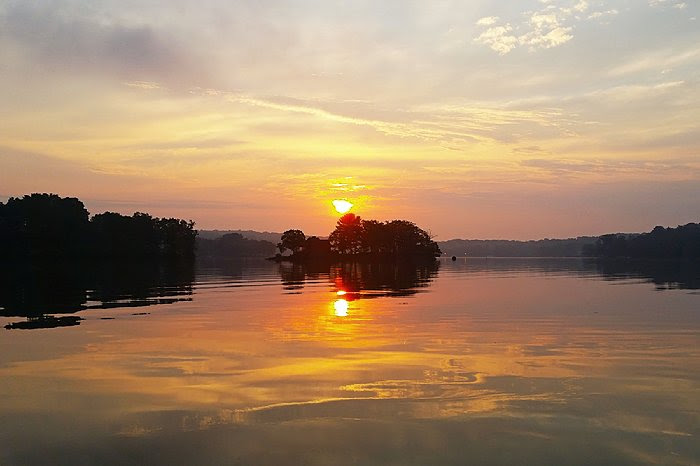


What Is a Lake “Turnover”?
You’ve probably heard about lake turnovers in the fall and spring and have maybe even seen them first hand as they change and mix Candlewood Lake twice a year. But what exactly is a lake turnover, and what causes it? Turnovers are actually an incredibly important part of lake ecology that affect not only the fish and other organisms living in the lake but can change the entire chemical composition of the water. Spring and fall are the two times of year that a turnover is the most common, and this phenomenon is particularly important for large, deep lakes like Candlewood.
Turnovers typically occur when the lake is the same temperature from the top to the bottom, which allows all of that water to mix together. This means that the less dense warm water that had been sitting on the surface of the lake all summer cools down and sinks to the bottom, where it mixes with the cooler, denser water that has been resting there. Since these two layers of water have been largely separate throughout the summer, their chemical compositions can be significantly different from each other. The bottom is often collecting nutrients, sediment, and other important compounds from the lake bottom, while the top collects oxygen from the air and nutrients from runoff. In the fall, these two layers mix, and this allows all the oxygen, nutrients, and sediment that have collected in either of the two layers to travel throughout the water column.
This mixing is why the water gets murky during a turnover, since the sediments that collected in the bottom of the lake can move up to the surface as the layers mix and become the same temperature. The above picture from a 2004 study by Young et al. gives a clear picture of what the layers of water look like in each season.
Then, in the spring, these two layers are again able to mix; causing the spring turnover. Since the top layer is relatively thin, the spring turnover is often less intense than the fall turnover, but still plays an important role in lake ecology. Though turnovers do affect fish species, Candlewood Lake is so large that the fish living in it have many different areas and depths to travel during the turnover. Thus, turnovers in our lake pose very little threat to our fisheries, whereas turnovers in shallow, small lakes can harm certain fish species that require slower environmental changes. However, fishing can slow down during a turnover in a large lake, as bass and other sport fish get used to the new conditions in the water.
The timing and length of a turnover has significant effects for the lake throughout the rest of the year. As water layers start to separate and a thermocline (the layer of water between the warm and cold layers) forms, the nutrient and oxygen levels that mixed together during the turnover can change the chemistry of the lake for the summer. This is why monitoring our water quality is so important and remains an integral part of what the CLA does every year.